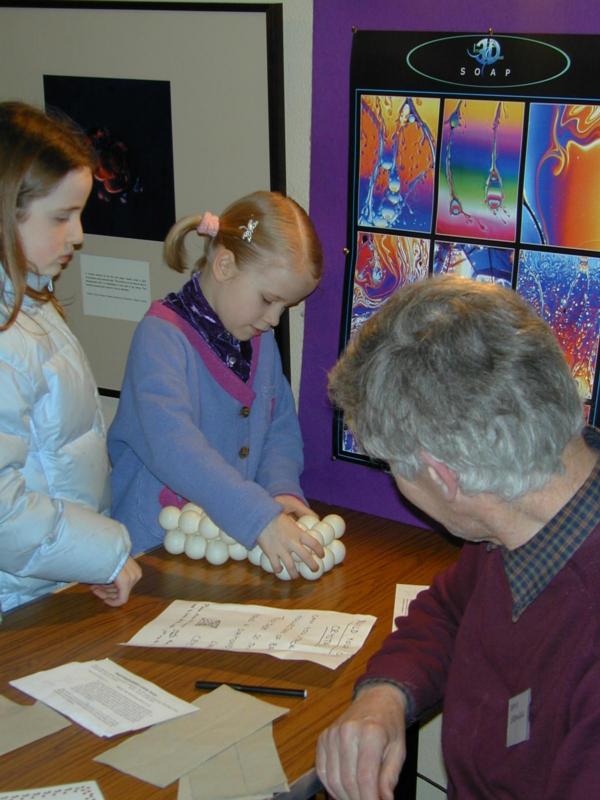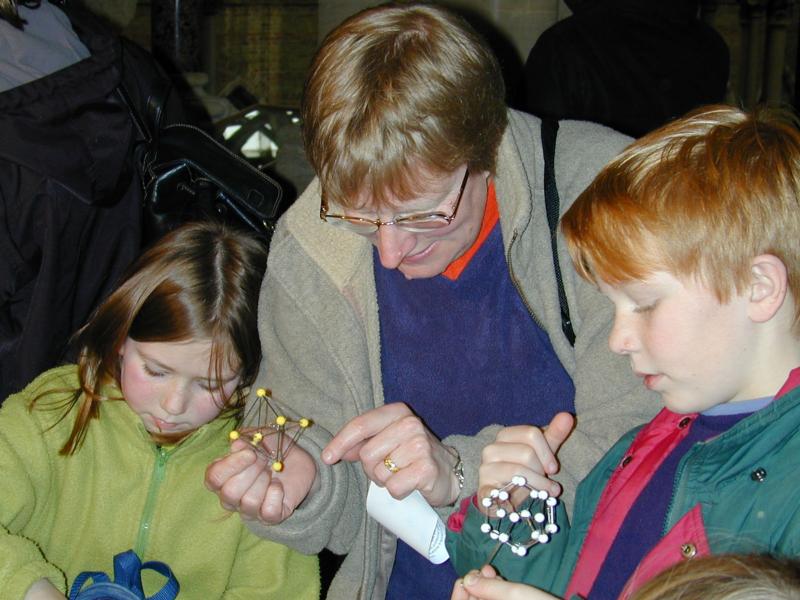
Mineral Detectives at the Museum
an educational half-term activity
A shortened version of this article appeared in the Dec 2001 issue of 'Crystallography News' page 12
The Oxford University Museum of Natural History decided to try to help parents to amuse primary school children at the half term break in February 2001 by arranging entertaining activities on 3 afternoons. They set up several display cases containing different minerals on the themes such as ''minerals and light', 'introduction to crystals, 'big mineral crystals', 'gemstones and decorative minerals'. These were accompanied by an instruction sheet, 'The A-Z shiny sparklers trail' which had a map of small stars to show you where to find the minerals with names beginning with that letter. When children had found the mineral they could write it's name and colour into a larger outline star, draw it, and say what they liked about it. This was a competition, the entries were stored in the 'Big Book of Natural History' and some may be stored on the website later.
A more interactive project was the 'Mineral Detective Sheet'. this consisted of 8 'hands on' activities associated with mineral properties including magnetism, shape, hardness and weight. There were 3 minerals for each activity and using the clues on the sheet, children were asked to decide between them. For example in the 'hardness' activity they could find out which mineral would scratch the others because it is harder. Each activity had a further question, for example "Look in the Industrial Minerals display. Can you see any minerals that have special uses because they are soft and slippery?" I will enquire whether I might be able to put these activities on the BCA web page. Each activity needs an adult helper to keep order and stop some of the children trying to discover how well the minerals scratch their schoolmates.
I was asked to provide a 'crystallographic activity', to complement these mineral ones. The accompanying pictures show children and their parents discovering how shapes can fill space by building up crystals using wooden model rhombic dodecahedral blocks on two bases which represent different crystal planes, this complemented the activity about garnet in the 'mineral detectives' activities.

These blocks were made as part of a BCA 'design an interactive exhibit' competition in 1994. They have proved robust in use and stand up to well to accidental falls. The second set of blocks from that competition were bright yellow plastic 'clip together' polygons which made up into truncated octahedra which also fill space. Unfortunately, these were rather larger blocks, so they are usually taken apart for storage between exhibitions. After doing this many times, we find that the 'clip' mechanism becomes slack so that the blocks become too fragile to use as originally intended.


The last activity used the 'Improbabubbles', from Beevers Miniature Models. These are wire frames in standard polyhedral shapes which are used with dilute washing up liquid to explore minimal surfaces. these were popular with all ages especially some of the parents.

Although the children were nominally between the ages of 7 and 11, many had
younger siblings, who naturally had to have a go too. One small girl barely
able to see over the table was fascinated, she clutched as many blocks as
she could carry & emitted very high frequency ear splitting squeals at
her mother's suggestion that she might let others have a go building with
the strange blocks. Perhaps the most enterprising was the toddler of 18
months who explored underneath the table where the soap films were placed,
and when found, was happily trying to drink from the backup bucket of water
for the soap films.
A good time was had by all!
Kate Crennell, March 2001
Acknowledgement for the images:
Page last updated 19 Dec 2001
These images were taken by Helen Cowdy of the Museum staff, they are
copyright the Oxford University Museum of Natural History, we are grateful
for permission to publish them here. Admission to the Museum is free,
details of opening hours and special activities can be found on their
website at
 Click here to return to BCA homepage
Click here to return to BCA homepage